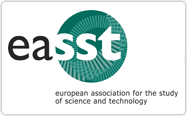Thinking Like a Machine
Alan Turing, Computation and the Praxeological Foundations of AI
DOI:
https://doi.org/10.23987/sts.122892Abstract
As part of ongoing research bridging ethnomethodology and computer science, in this article we offer an alternate reading of Alan Turing’s 1936 paper, “On Computable Numbers”. Following through Turing’s machinic respecification of computation, we hope to contribute to a deflationary position on AI by showing that the activities attributed to AIs are achieved in the course of methodic hands-on work with computational systems and not in isolation by them. Turing’s major innovation was a demonstration that mathematical and logical operations could be broken down into elementary, mechanically executable operations, devoid of intellectual content. Drawing out lessons from a re-enactment of Turing’s methods as a means of reflecting on contemporary artificial intelligence (AI), including the way those methods disappear into the technology, we will suggest the interesting question raised in “On Computable Numbers” is less about the possibilities of designing machines that “can think” (cf. Turing, 1950), but the practical work we do, and which is made possible, when we ourselves set out to think like machines.
Downloads
Published
Versions
- 2024-05-15 (2)
- 2023-07-04 (1)
Issue
Section
License
Copyright (c) 2023 Dipanjan Saha, Phillip Brooker, Michael Mair, Stuart Reeves

This work is licensed under a Creative Commons Attribution 4.0 International License.





